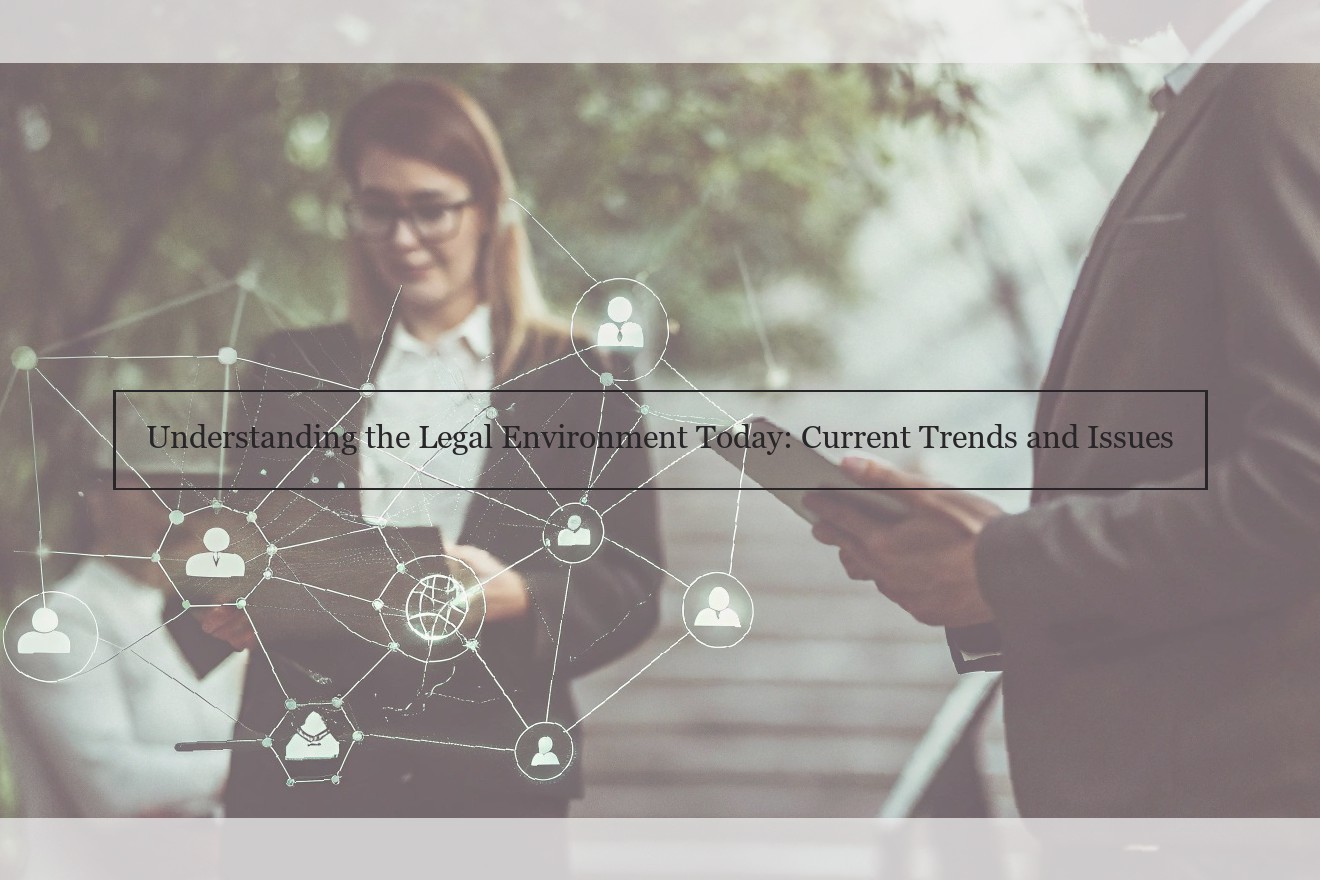The Present State of the Legal Environment
The modern legal environment is dynamic and multifaceted, arising from a complex web of influences that shape best practices and the systems in which attorneys and clients operate. This environment is marked by four major characteristics that have evolved – or coalesced – in recent years.
First among these is the omnipresence of global influences. Unlike the past, where legal concerns were often compartmentalized by jurisdiction, today’s legislation and regulations expose companies to a constellation of domestic and cross-border complexities. The convergence of politics and business has created a situation in which virtually any company – of any size – can be drawn into a legal quagmire in any jurisdiction in the world. It is no longer just the realm of large multinationals with extensive foreign operations. Now, even small companies may find their activities in one country subject to governing laws thousands of miles away.
This bears a following link to pervasive legislation. Our laws are becoming both increasingly wide-ranging and complicated. The spectrum of legal obligations now runs from the foundational (e.g., the tax code) to the minutiae of industry regulations (e.g., consumer protection). At the same time, the regulation of industries has moved and continues to move from federal to state and/or local levels in order to address localized interests. In short, lawyers must now be versed in the whole constellation of legal possibilities for a given problem.
This has created a perfect storm of growing risks. Legal compliance isn’t limited to meeting one set of requirements; a business may need to comply with multiple jurisdictions and regulatory frameworks. This renders the modern business vulnerable to a minefield of megatrends, any one of which has the potential to wreak havoc on the unprepared organization .
These megatrends include shifts in the international political and economic order, such as war, terrorism, and governmental decisions that significantly affect trade and investment patterns. In addition, there are persistent "regulatory megatrends," which also exist in other countries. At the same time, non-financial and financial capital markets are subject to megatrends that include the demand for corporate transparency and accountability, demand for "greener" operational practices, and the changing nature of customers who seek more sustainable products and services.
All of this is exacerbated by digilization. New technologies are moving at an accelerating pace and redefining the social contract between businesses, regulators, and customers. By virtue of their nature, these new digital technologies spread rapidly, overwhelm with potential, and are difficult to control. The effects are far-reaching. For example, under U.S. law in particular, personal data is considered property, which is subject to creation, collection, licensing, sale or purchase, trade, and distribution. The absence of a "digital privacy or data protection right" has created a climate of surveillance, under which the government, private enterprise (advertisers), and even hackers freely monitor individuals’ activities, interests, and data. The opportunities for surveillance are staggering. The risks of not regulating are just as great. The absence of regulation poses the risk that individual rights will be trampled, the lines between the public/private sectors will become blurred, the secret sharing culture will take over, and democracy will be compromised.
The burden that these risk factors place on legal and professional services is staggering. Yet, despite the risks, there is every reason to believe that businesses will continue to grow. If they are to thrive, however, they must be nimble enough to embrace change on a continuous basis.

Technological Influence in the Legal Field
Technology has drastically changed the landscape of legal practice in recent years. The rise of digital contracts, which allow for electronic means of agreement, is just one example of how this development has both simplified and complicated the practice of law. With the ability to post agreements online and sign off digitally, traditional software tools have been replaced with platforms such as DocuSign and HelloSign. But because the online infrastructure offers a false sense of security, these practices are not without warning. Some have questioned the validity of online contracts and their ability to hold up under scrutiny. Nonetheless, digital signatures have become widely accepted in most jurisdictions across the United States.
Artificial intelligence has found its way into legal practices in many forms. From e-discovery to document review, algorithms have begun to take the place of lawyers. According to a report from Bloomberg Finance, the market for legal AI will reach more than $3 billion by 2021. Apps like DoNotPay, which fights parking tickets and other minor infractions for users, have added their names to the list of Silicon Valley darlings. The app took the "legal tech" world by storm when it emerged just over a year ago. In addition to raising more than $3 million in funding, the program has now expanded its capabilities to address anything from immigration paperwork to small claims court cases. It also now operates in Canada and the U.K.
While these disruptive technologies have streamlined the work of many lawyers, others have grown concerned about the disruption that lies ahead. Without the support of a vast network of paralegals and document reviewers, machines are now left to do what once required the labor of dozens or even hundreds. While technology has certainly helped load some of the burden on routine tasks, the abridged review process has further legitimized the practice of outsourcing, resulting in possible ethical consequences. And then there is the question of cybersecurity: With lawyers now storing all of their most sensitive work on the web, intrusions into private documents are skyrocketing. For example, Law360 reported that FBI estimates of business email compromise in the legal sector have increased more than 50% in just one year.
In 2019, thousands of cases are filed in state and federal courts each day. Lawsuits are complex and often span many months or even years. As lawyers, they are granted a professional responsibility to uphold the rule of law both in and out of the courtroom. Practicing lawyers have a keen awareness of the law and merely pass that knowledge onto their clients. However, new technological advancements in legal practice are robbing us of many of those advantages. How we – as individual legal practitioners and as an industry – adapt to these disruptions will largely determine our profession’s future.
The Role of Globalization in Legal Affairs
In an era marked by unprecedented global interconnectedness, the legal industry is not immune to the forces shaping other sectors. One of the defining trends is the evolution of legal systems across borders. Globalization has not only increased the volume of cross-border transactions but has also resulted in a complex web of cross-border regulations, enforcement mechanisms, and transnational litigation.
The impact of such interdependence is seen, among other ways, in the proliferation and enforcement of international trade agreements. The World Trade Organization (WTO), for instance, has been instrumental in reducing international trade barriers and fostering a more competitive, global marketplace. But as states become more integrated, they also face the challenge of harmonizing their respective legal frameworks.
Free trade agreements also regulate national sovereignty in the name of efficiency. For example, the North American Free Trade Agreement (NAFTA), now the United States-Mexico-Canada Agreement (USMCA), has driven economic integration further by providing for streamlined customs procedures and investment protections across three countries. As free trade agreements integrate diverse national economies, they likewise harmonize their legal regimes—typically privileging business interests over other legal norms, such as labor, health, and the environment.
At the same time, the legal system remains one of the last bastions of state sovereignty. For that reason, globalization does not necessarily mean greater standardization, or even harmonization. No matter how similar the national laws might be, the legal interpretation often varies substantially between jurisdictions. The global "city of law," to borrow from the terminology of Professor Roger Alford, is yet to be created. Instead, legal chambers of commerce are establishing their own norms, but they are geographically limited and not without controversy. The London Court of International Arbitration, for example, enjoys high regard in the field of international commercial arbitration, but it does not have the authority to issue enforceable decisions in civil law countries. While the New York State Bar Association considers adopting the Uniform Bar Exam, the practice of law has not yet been transformed into a global credential.
International forums for dispute resolution, including the International Centre for Settlement of Investment Disputes and regional and sub-regional arbitration centers, are another manifestation of the need for greater cross-border cooperation. Such international fora adjudicate cases in accordance with transnational legal norms, such as customary law or treaty-based rules. But in many cases, like those adjudicated by the International Court of Justice, international courts and tribunals face jurisdictional limits that deny them access to evidence or facilities critical to the adjudication of cases. In addition, the political pressures on international jurists may limit their effectiveness in certain cases.
Inasmuch as the repertoire of transnational legal norms is growing, so too are the conflicts in the application of those norms. Commercial arbitration has become the preferred mode of settlement of disputes in Europe, Asia, and the Americas, but the United Nations Convention on Contracts for the International Sale of Goods (UNCISG or ‘CISG’) has yet to be endorsed by several countries. In addition to countries such as the United States, Egypt, India, and Brazil, the CISG is noticeably absent from India, Myanmar, or Thailand. Meanwhile, the stress points in the application of the CISG continue to multiply.
Modern legal practice requires lawyers to be increasingly responsive to an evolving legal landscape. Lawyers currently face challenges that transcend national boundaries, while those challenges are met with strong traditions of nationalism and legal particularism. The challenge for lawyers is to forcefully advocate the rule of law at home and abroad, while promoting greater standardized and shared understanding of how and why the law is applied in a complex and sociocultural context. The challenge for clients is to obtain a countermapping of local institutional capacity, sophistication, and dynamics that are conducive to the predictable and proportionate application of the law.
Environmental Regulations and Sustainable Practices
In a world increasingly preoccupied with the environmental crisis and social sustainability, the importance of environmental law cannot be understated. Standing at the intersection of public policy and social responsibility, environmental law is changing faster than ever as legislators scramble to find solutions and solutions become law. Because law changes so rapidly, its impact can be difficult to assess – it becomes easy to believe that it has little impact on the "real world," especially amidst the cacophony of environmental rhetoric.
In our next Series Entry, we discussed the importance of legal frameworks in combating climate change and creating a new future for humanity and our planet. Sustainable law is inherently sensible law, and it becomes extraordinarily difficult to see when the sound approach is simultaneously the most sustainable. Tackling social issues is complicated in the best of circumstances, but how often has solving one problem meant causing another?
Furthermore, in an age where certain factions within society persistently deny the realities or extent of the current crisis, the reality is that continued environmental protection is going to require enforcement, oversight, and government involvement to ensure the survival of our planet and its future.
In law, this means that meaningful public policy is of the utmost importance. In contrast to many other areas of law and legislation, protection of the environment, other natural resources, and sustainable development must be viewed holistically, with a specific eye to the social, economic, and legal realities of the current state of society.
This is a complex perspective, but ultimately, it is also the only credible perspective of how to combat climate change, and in fact, how to combat all of the greatest challenges of our current age.
Corporate Governance and Compliance Obstacles
For publicly traded corporations, the obligation to practice good governance is both a business imperative and a legal obligation. Regulators have spent years upgrading the rules regulating corporate governance and director accountability and shareholders are taking a more active role in demanding accountability. Corporations must also remain vigilant to ensure compliance with the laws regulating their business.
For example, as a result of the global financial crisis, the U.S. Securities and Exchange Commission adopted a number of new regulations applicable to public companies. These rules focused on subjects such as compensation disclosure, internal accounting controls, the independence of corporate directors and the reporting and disclosure of material events. The SEC is continuing on the path of improving regulation of issuers through its regulation G, a set of rules that are designed to provide greater transparency in connection with an issuer’s public disclosures.
Similar improvements have been made in Canada. In 2006, the Canadian Coalition for Good Governance (through its Corporate Governance Guidelines) and the Ontario Securities Commission (through Multilateral Instrument 52-109 "Certification of Disclosure in Issuers’ Annual and Interim Filings") issued statements designed to improve corporate governance practices.
Despite these improvements , regulators in the United States and Canada have expressed a need to continue developing regulations to ensure that corporations do not engage in practices that aim to circumvent or subtly promote non-compliance. Particularly for U.S.-listed corporations, non-compliance can be very costly. For example, the U.S. Securities and Exchange Commission recently increased the annual registration fees for companies registering securities offerings under the Securities Act and the Securities Exchange Act ("Exchange Act"). The new rules restructured the way filing fees are calculated and now charge issuers on a per-transaction basis. Corporate Canada may soon feel the pain as the Canadian Securities Administrators considers similar changes.
As private business owners consider entering the public markets, the issue becomes even more critical. Corporate sponsors, venture capital funds, and large private equity firms must take the time to assess their obligations and potential liabilities under securities laws, both in the United States and Canada.
Shifting Trends in the Legal Sphere
As remote work becomes more common, employers and employees are facing new questions about their legal rights and responsibilities. Is the employee still entitled to pay or benefits? How do you handle intellectual property issues? What safety regulations apply in the home? While many of these issues have clear answers under the law, the increasing prevalence of remote work adds another layer of complexity to their resolution.
Another area of rapid change is sexual harassment – and the accompanying need to implement appropriate policies against it. The #MeToo movement has highlighted the issue of sexual harassment allegations in recent years, leading to increased public scrutiny of how employers investigate and respond to them. While the movement has also created discussion around whether the law goes far enough in providing victims of sexual harassment with protection or a road to justice, it has already affected the landscape of how employers handle such complaints.
The Future of the Current Legal Environment
There are several key trends which we see continuing to shape the future of the legal environment. First, advances in legal education are expected to play a significant role in shaping the future of the legal landscape. New and innovative approaches to curricula and clinical experiences are likely to augment the traditional law school model and enhance the quality of legal education.
Advancements in technology will also continue to impact the legal profession. We see a future in which automation and artificial intelligence assume a larger role in the provision of legal services and the delivery of legal operations functions. This evolution will present opportunities for lawyers to focus on the more human aspects of the profession, such as relationship building and strategic thinking.
The legal profession is also likely to experience shifts in employment models . Employers will need to be flexible and to develop models which enable effective resource allocation and support lawyers in succeeding in new professional realities, such as the 24/7 economy.
Changes in public attitudes regarding the legal profession will also be influential in reshaping the future legal environment. Clients, the press, the public and other stakeholders collectively have a larger voice than any one lawyer or law firm. A shift in perception – whether we are talking about in-house compliance and the importance of the ethics in-house lawyers or law firm partner or down-time by the bench or others in the judiciary — may well serve as a catalyst for legal and other professions finding common ground in the re-conception of ethics.
Lastly, we expect to see potential policy changes implemented at the state and federal level. Currently, there are challenges to the ABA accreditation process and what it means for budding lawyers and what institutions will be the ones assessing the legal system in the future.




+ There are no comments
Add yours